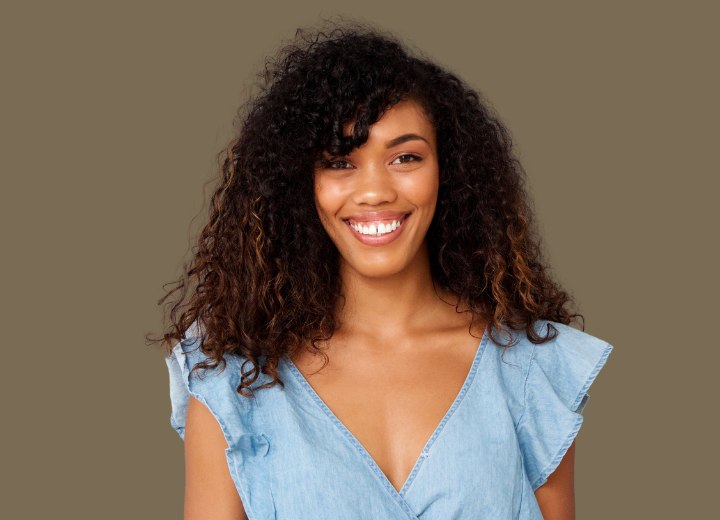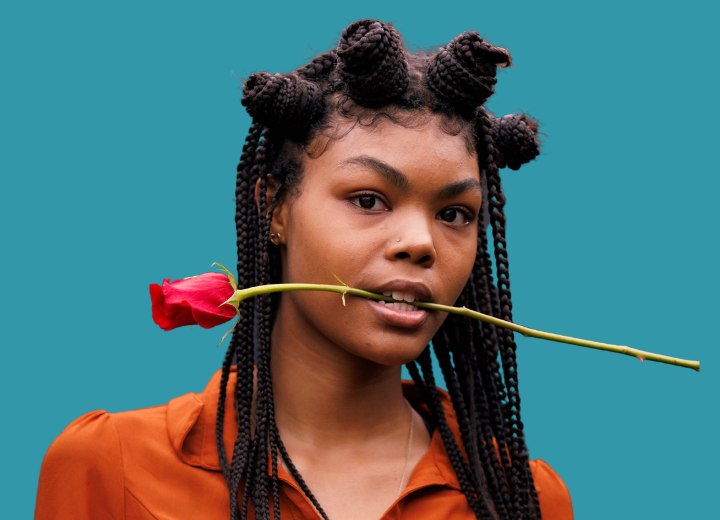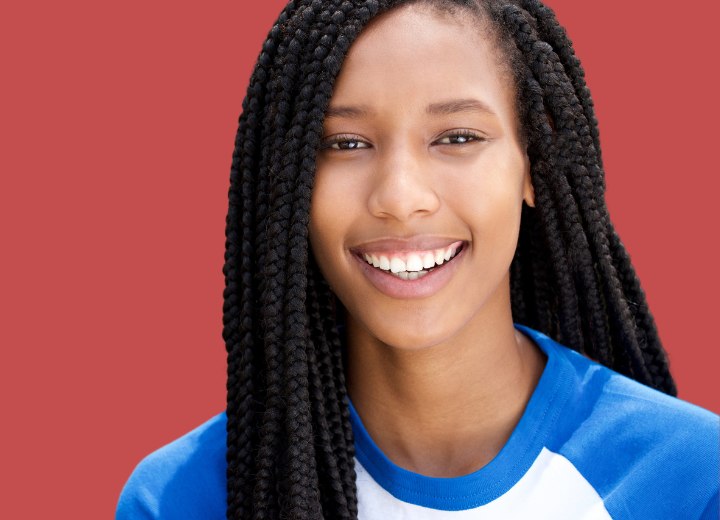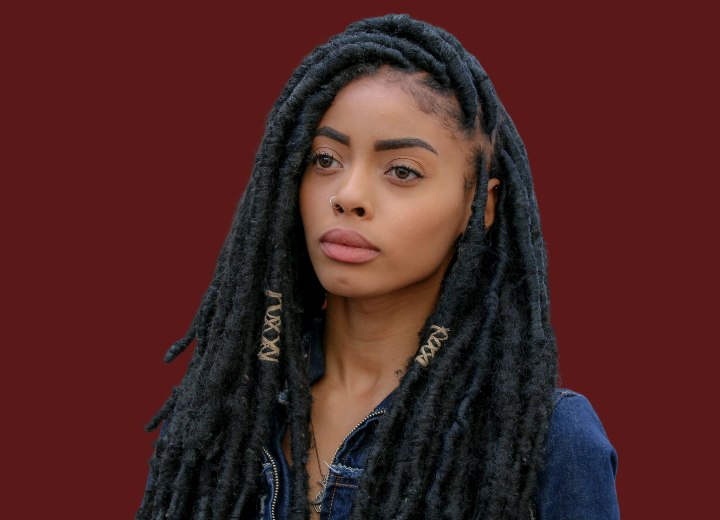African Hairstyles 101

Afro
The Afro is a style created in natural African hair (and among others who have tightly curled or kinky hair) where the hair is styled so that it stands out from the scalp. In many cases, the overall shape of the silhouette created is round, although the shape can vary depending on the individual's preference. Afros gained tremendous popularity in the 1960s and 1970s – in most cases as a fashion statement, and later as a symbol of the strength and beauty of black hair.
Afro Puffs
This is a variant of the Afro style using natural hair that is secured into an elastic holder in a variety of configurations and styled to "puff out" beyond the confines of the holder. Afro Puffs provide an easy way to showcase and style natural hair. The styling technique is ideal for use with children where a neat and tidy, yet attractive style is desired.

This style is created by sectioning the hair and twisting it into tight, firm coils. The size of the sections of the hair depends on the length of the hair, and the shape of the sections can be whatever you desire – square, rounded, triangular, polygonal, amorphous.
The hair from a given section/parting is taken and twisted until the hair tightens into a firm coil. The ends of the hair are tucked under the coil. In cases of shorter hair, you may need to use an elastic band to hold the hair in place. Just make sure it is not visible in the finished knot.
Braids
Braids are pretty self-explanatory. They involve taking at least three strands of hair and weaving them into rope-like formations. Braids can be created to hang freely from the scalp, or to lie close to the scalp and follow the contour of the head. As with Bantu knots, braids can be created using sections of any size and shape as desired.
The hair can be divided into a few large sections and large, soft braids can be formed, or small sections can be created and dozens/scores of smaller braids can be formed to create a mop-top style. The braids can be adorned with beads, bands, and jewels if desired, and if the hair (and subsequent braids) is long enough, the braids can be pulled back and gathered into a simple or elaborate configuration.
There have been a lot of arguments about braids and whether they are safe for the hair or not. The thing to remember about braids is simply that while you want your braids clean and neat, they should not be too tight. "Too tight" means that the hair is pulled tightly enough to cause the scalp to be stretched and raised.

This is a braided style that gained popularity among more than just the Black community in the late 1970s and early 1980s. The style is named for the appearance it creates on head, which reminds one of rows of corn growing in a field.
Traditionally, cornrow styles were created so that the braids were positioned parallel to one another, and often, the ends were adorned with beads to add weight and make the portions of the braids that hang from the scalp swing freely.
These days, however, cornrow styles are created in elaborate patterns – curving lines, spirals, whorls, zigzags, and other geometric designs. The elaboration of the design depends on the skill of the person braiding. The safety of the style is determined by whether the hair is pulled too tightly as described above.

Dreadlocks are a style created in the hair by encouraging sections of the hair to twist, coil, and knit together into ropey lengths. There are literally countless methods of creating dreadlocks – building off of twists, combed coils, and even braids. Dreadlock styles can be formed to make any size "lock" you want.
The process of growing dreadlocks can take a relatively long time (2-3 years for fully formed or "mature" locks) and the various maintenance techniques include everything from palm-rolling to yarn-wrapping.
Continue reading ...